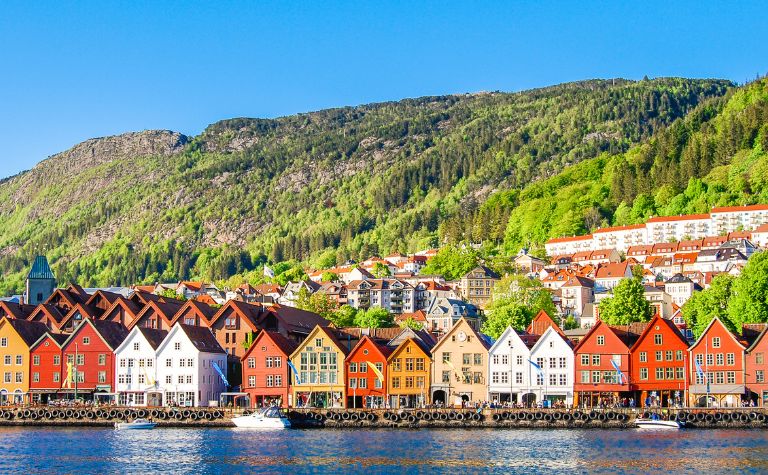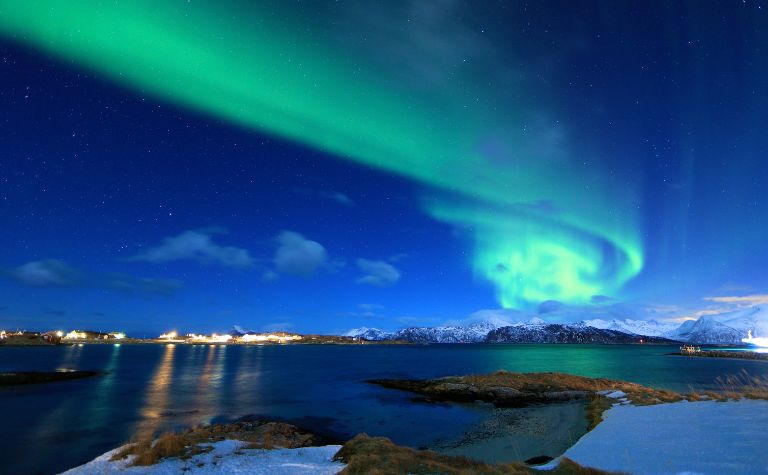Many factors determine the popular food choices of a given people or region. Accordingly, most countries or people tend to have unique dietary preferences.
One of the regions with some of the healthiest and most fascinating dietary choices is Scandinavia.
Scandinavians typically eat a lot of fish. The average Scandinavian diet is plant-based, featuring fruits, vegetables, and legumes.
It’s also rich in seafood, fish, lean chicken, and turkey but low in carbohydrates and saturated fats.
This article will explore related topics, including the typical Scandinavian diet and whether Scandinavians eat a lot of fish.
It’ll also explore some of the reasons behind the unique fish-centric Scandinavian diet.
Also, see What Are Swedish Crepes? to learn more.

How Much Fish Do Scandinavian People Eat?
While true, it’s actually insufficient to say that Scandinavians eat a lot of fish. They do, but saying “a lot of fish” doesn’t really encompass how much of the stuff they eat.
While the Scandinavian diet is primarily plant-based, fish still provide the largest source of protein for the Nordic people and are preferred to other meat options.
Many factors determine the dietary choices of a given region of people. These include:
- Taste preferences
- Convenience
- Availability
- Cost
For the Scandinavian people, nutrient quality and health take center stage.
Take Norway, for example. According to Statistica, the sales volume for fish reached 1.49 million metric tons (1.47 imperial tons) in 2020. [2]
According to this source, the average volume of fish and fish products consumed in the country averaged 19.5 kilograms (42.99 pounds) per capita.
By comparison, a 2018 survey showed that Swedes consume seafood (including fish) at least twice a week. [2]
In Denmark, the Danish fishing fleet delivered 2.1 billion Danish kroner worth of fish for consumption in 2021. [3]
So yes, Scandinavians eat a lot of fish, probably more than anyone could imagine.
Also, see What Are Swedish Fish? to learn more.

Why Do Scandinavians Eat So Much Fish?
There are several reasons why Scandinavians eat such a large amount of fish. These include cultural influence and traditions, a booming fishing industry, and long and plentiful coastlines.
Scandinavia is a fascinating case study as far as nutrition goes. Below are some factors that influence the high fish intake in the region.
Cultural Influence
One takeaway from the Scandinavian diet is that it features healthier food options, including lean meats, seafood, and fruits and vegetables. This is due in no small part to the culture and traditions in these countries.
While the Scandinavians have come a long way since their Viking days, much of their culture and many of their traditions have mostly stayed the same. That’s especially true of the food they eat.
For centuries, dating back to the Viking era, Scandinavians have incorporated vast amounts of seafood and fish into their diets.
Besides raiding, farming, and fishing were two ways Vikings maintained their livelihoods.
While other European countries are just now beginning to shift from the fast food culture of the West to healthier options, Scandinavian cuisines have withstood the test of time.
That’s not to say there are no McDonalds in Scandinavia, but people don’t frequent them as often as in the US or UK.
Instead, Scandinavian people prefer to consume local cuisines. [4] They enjoy cooking at home, and if they go out, they typically frequent local bars, pubs, and restaurants.
Fish has been part of Scandinavian’s home-cooked meals and dining cuisine for far longer than fast food places have existed, mainly because it is a rich source of acids, omega-3s, and protein.
Scandinavia, and Norway in particular, is thus a haven for those looking for some of the healthiest cuisines in the world.
Long Coastlines
The high preference for fish and fish products in Scandinavia can also be linked to its geography.
Accordingly, the Scandinavian countries have very long coastlines and fjords. In essence, the Scandinavian countries are surrounded by seas. [5]
The Scandinavian peninsula is estimated to be 1,150 miles (1,851 kilometers) long. [6]
It extends from the Barents Sea in the Arctic Ocean, the Baltic Sea to the east, the Norwegian and North Seas in the west, and Kattegat and Skagerrak to the south.
Because of these aspects of their geography, Scandinavians have easy access to different varieties of delicious fish. As previously stated, availability has a significant impact on dietary choices.
A Booming Fishing Industry
The long coastlines and a booming fishing industry often go hand in hand.
Fisheries have been a significant industry in Norway, with thriving fishing industries emerging everywhere along the coastline.
These include salmon farming. According to Statistica, salmon is the number one most farmed animal in Norway, reaching annual sales of up to 1.4 million metric tons (1.37 imperial tons) in 2020.
Fish is also a major export for Scandinavian countries.
It is estimated that the value of fish exports from Norway’s fisheries reached roughly 95 billion Norwegian kroner in 2017.
The total import value for frozen fish only amounted to 2.3 billion Norwegian kroner. [2]
Also, see How to Make Swedish Pancakes to learn more.

What Is the Typical Scandinavian Diet?
The typical Scandinavian diet consists of plants and a healthy dose of fish and seafood.
A key feature of this diet is that it includes few processed foods, making it one of the most nutritious diets in the world.
Scandinavian countries have many common features that could be linked to their history. One of these relates to their cuisines and their unique approach to nutrition.
The Scandinavian diet has attracted increasing interest from all around the world.
As an environmentally friendly and healthy food approach, this diet has enamored nutritionists, environmentalists, and those looking to lose weight. [1]
The typical Nordic diet emphasizes eating whole foods and fresh options while limiting the consumption of processed foods as much as possible.
The objective is to select foods that provide the highest nutrients.
This diet is also high in lean proteins and healthy fats. Consequently, the diet is not only lean but light because the Scandinavians consume minimal carbs.
The Scandinavians also have a preference for legumes such as beans and peas. The primary source of protein for the Nordic people is oily fish.
Some popular oily fish that make up the Scandinavian diet include herring, Norwegian salmon, and mackerel. They’re high in protein and provide a good source of essential fatty acids.
Besides fish, the Nordic people also get their lean protein from chicken and other meat options such as rabbit and venison.
Also, see Why Do Scandinavians Not Feed Guests? to learn more.
References:
[1] Source
[2] Source
[3] Source
[4] Source
[5] Source
[6] Source
